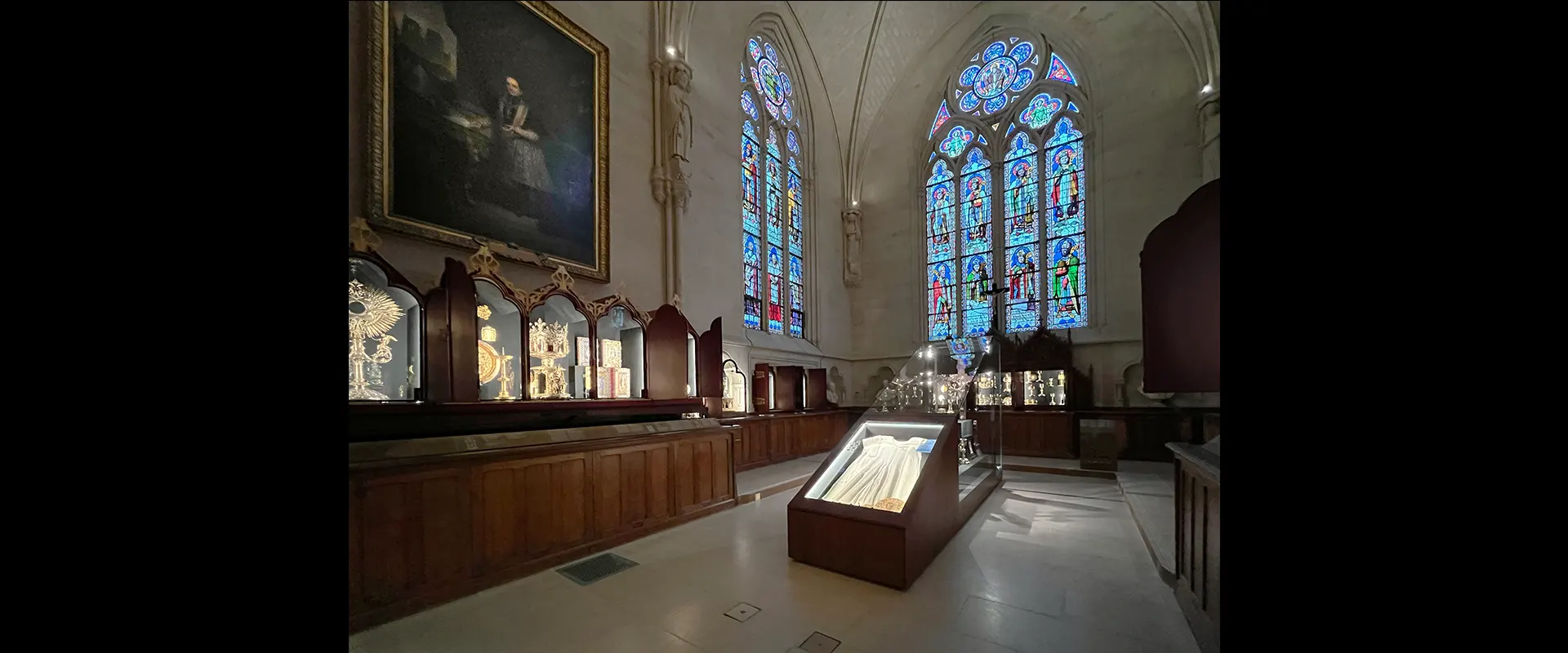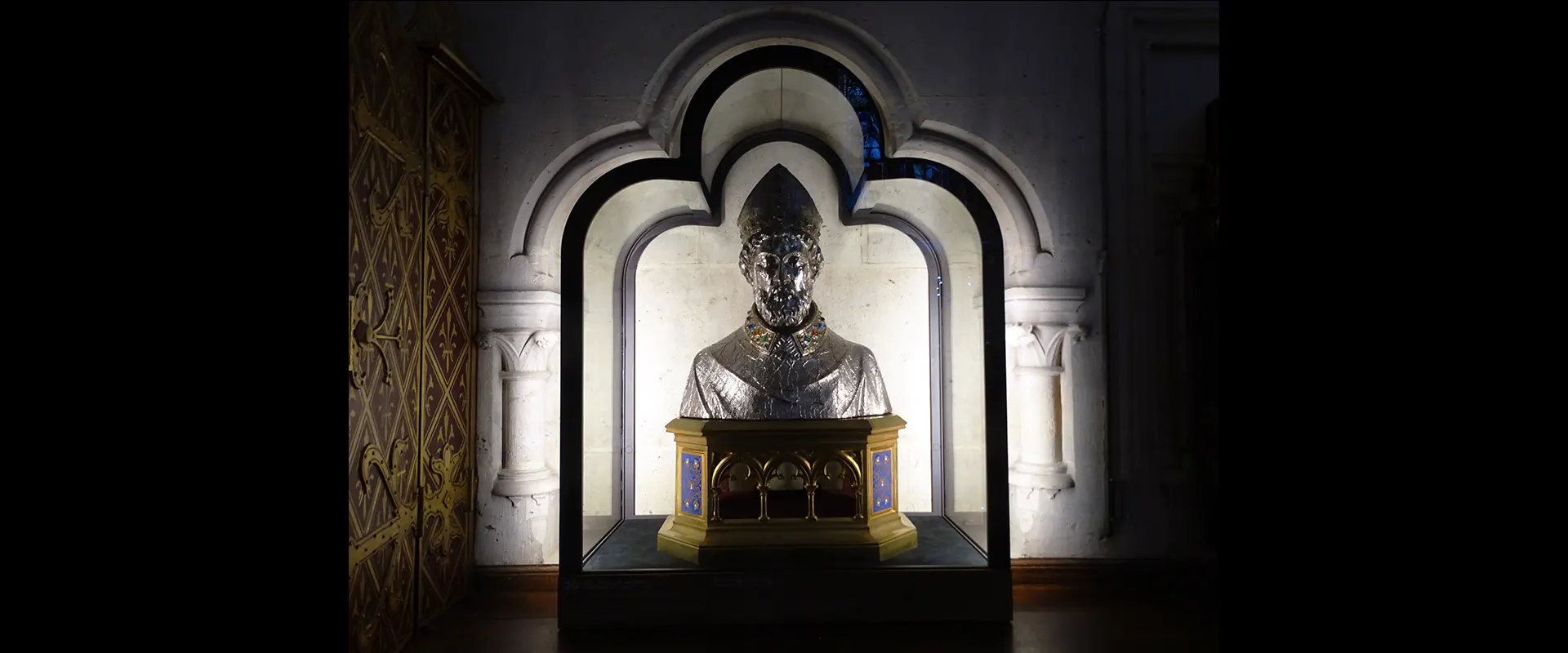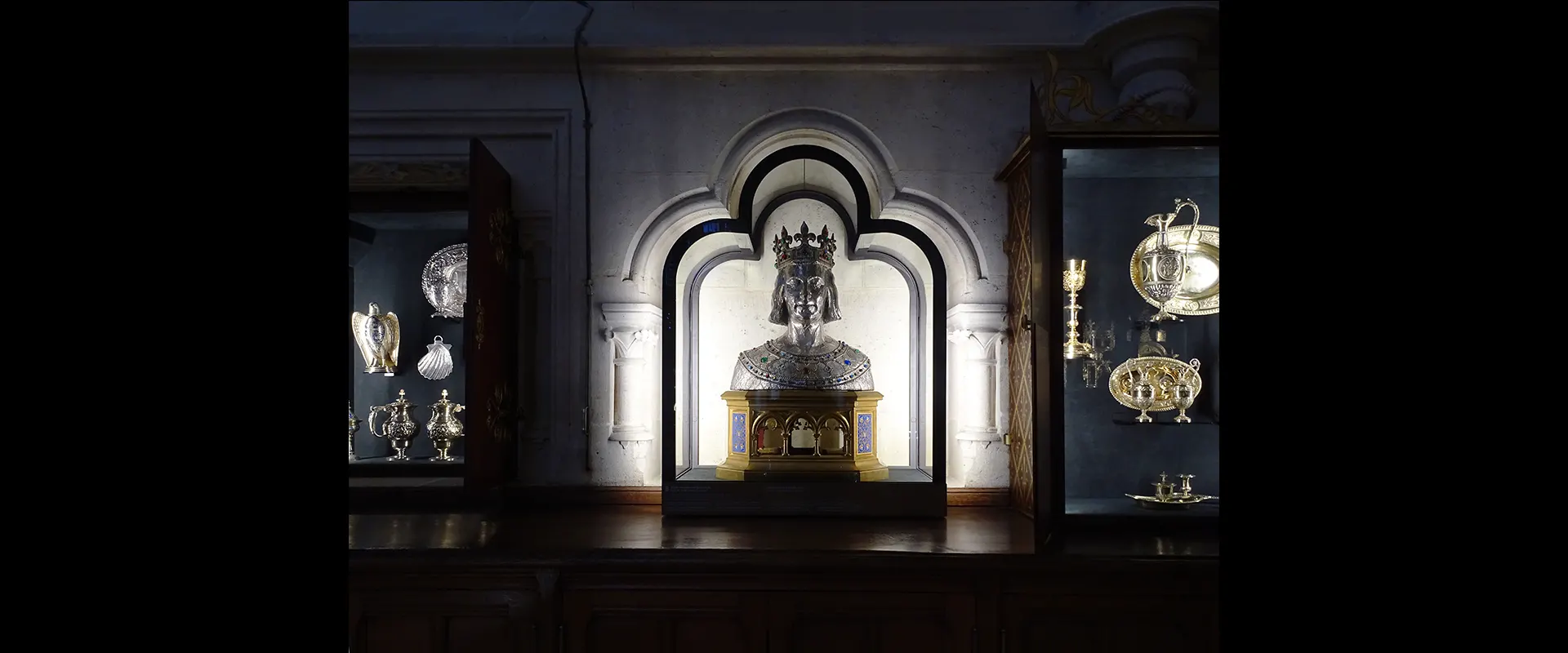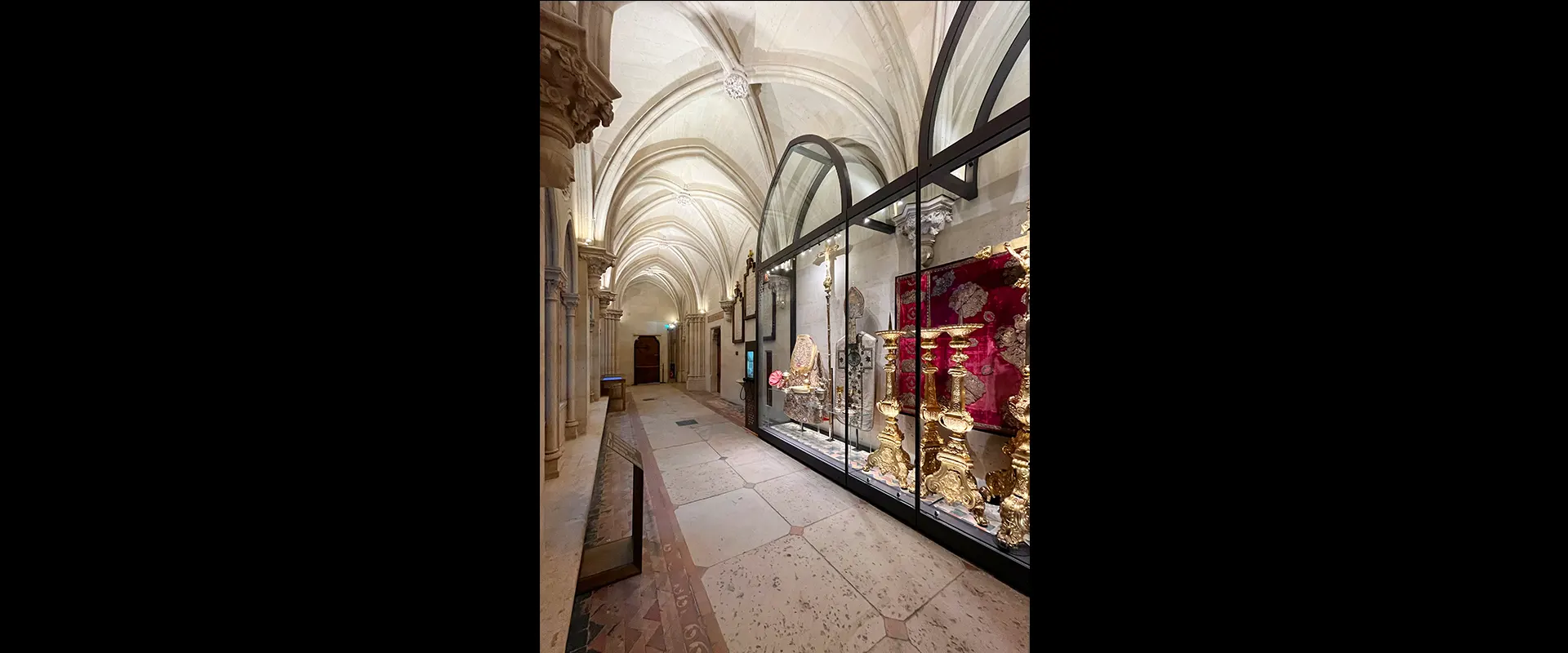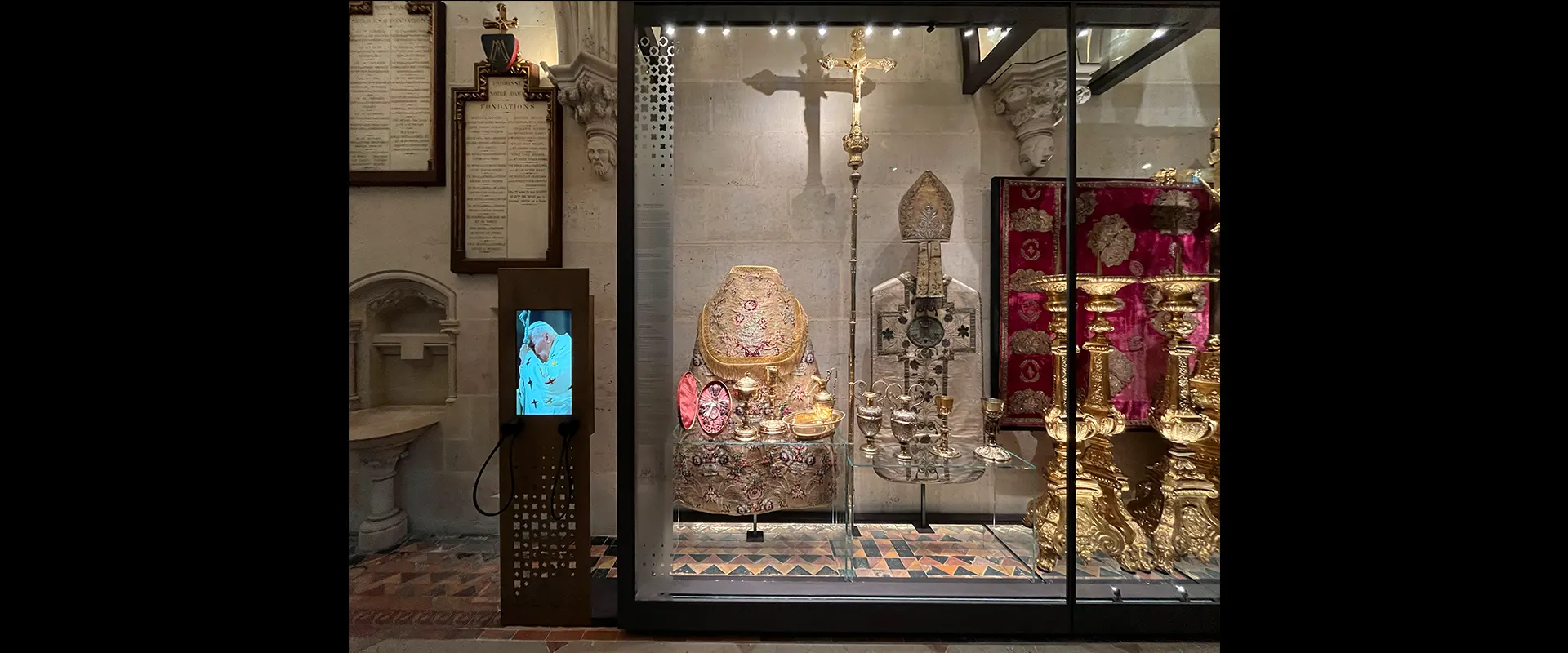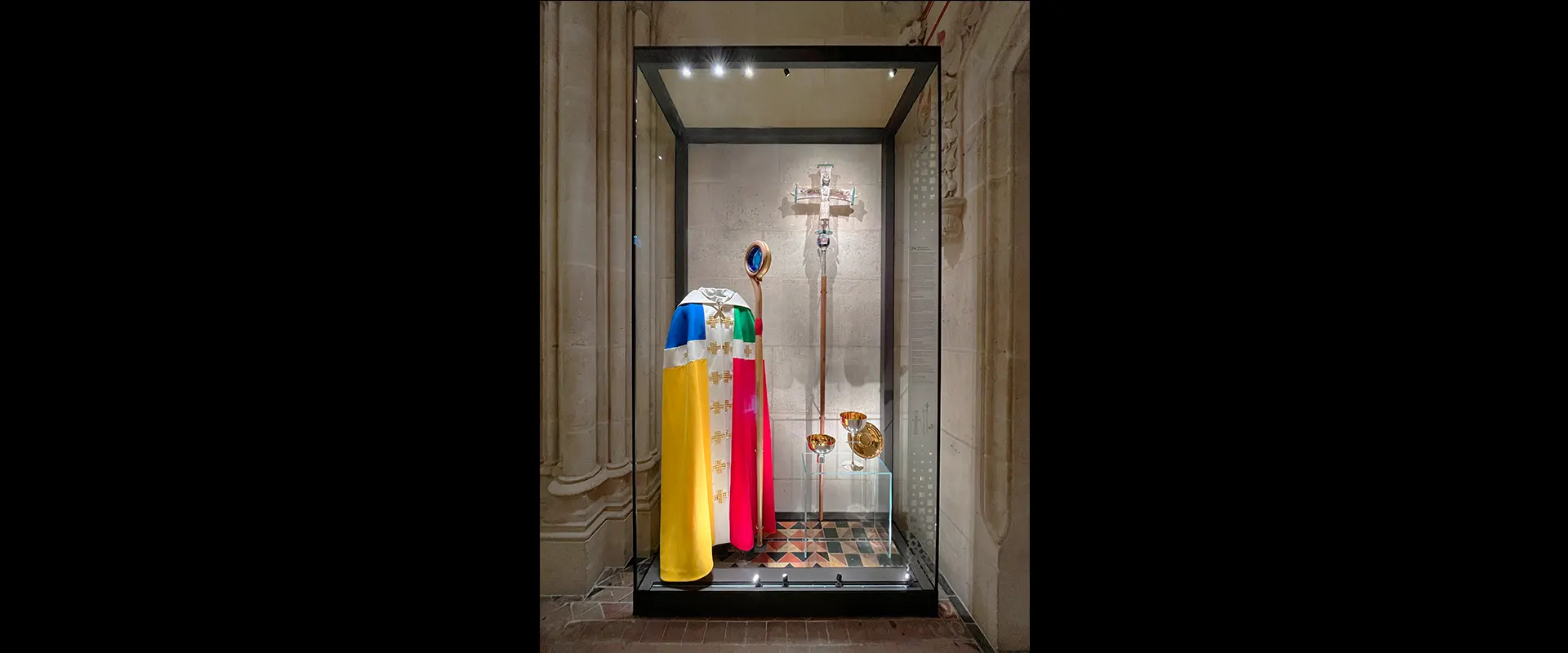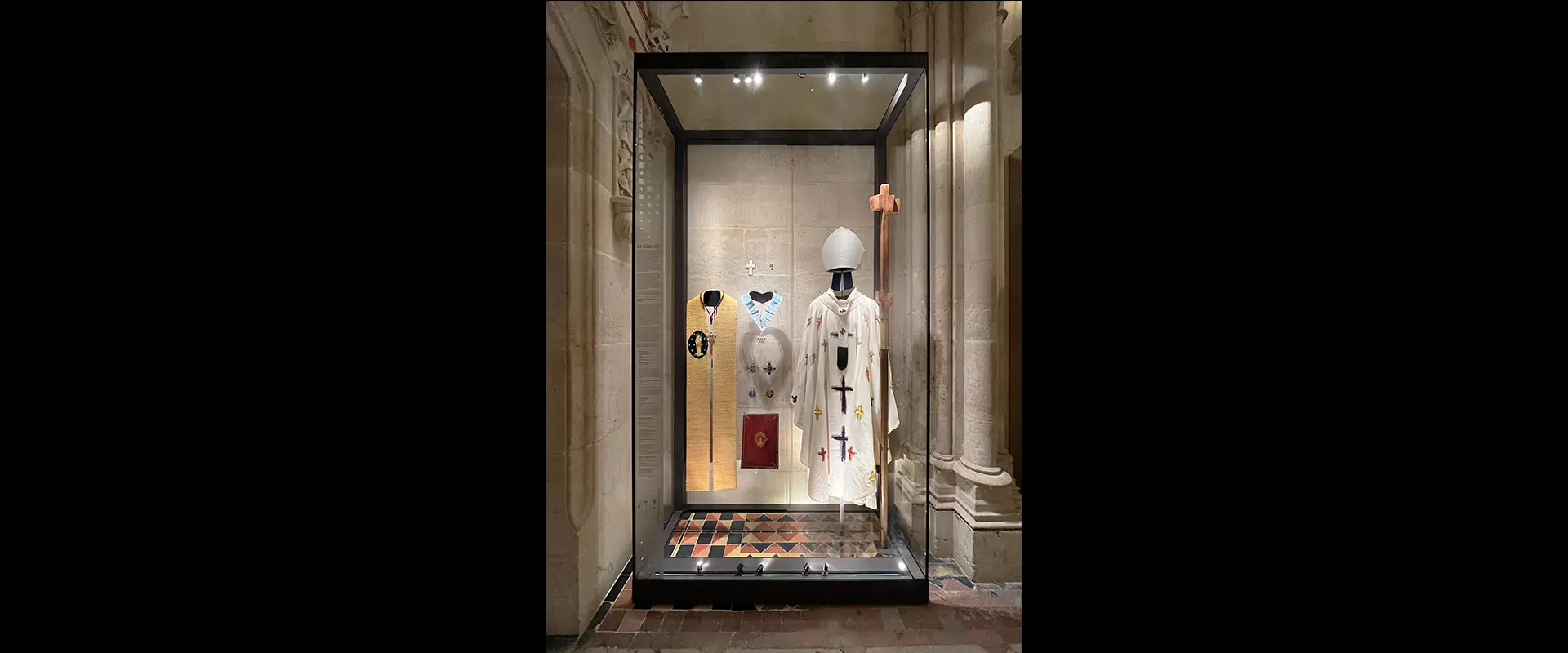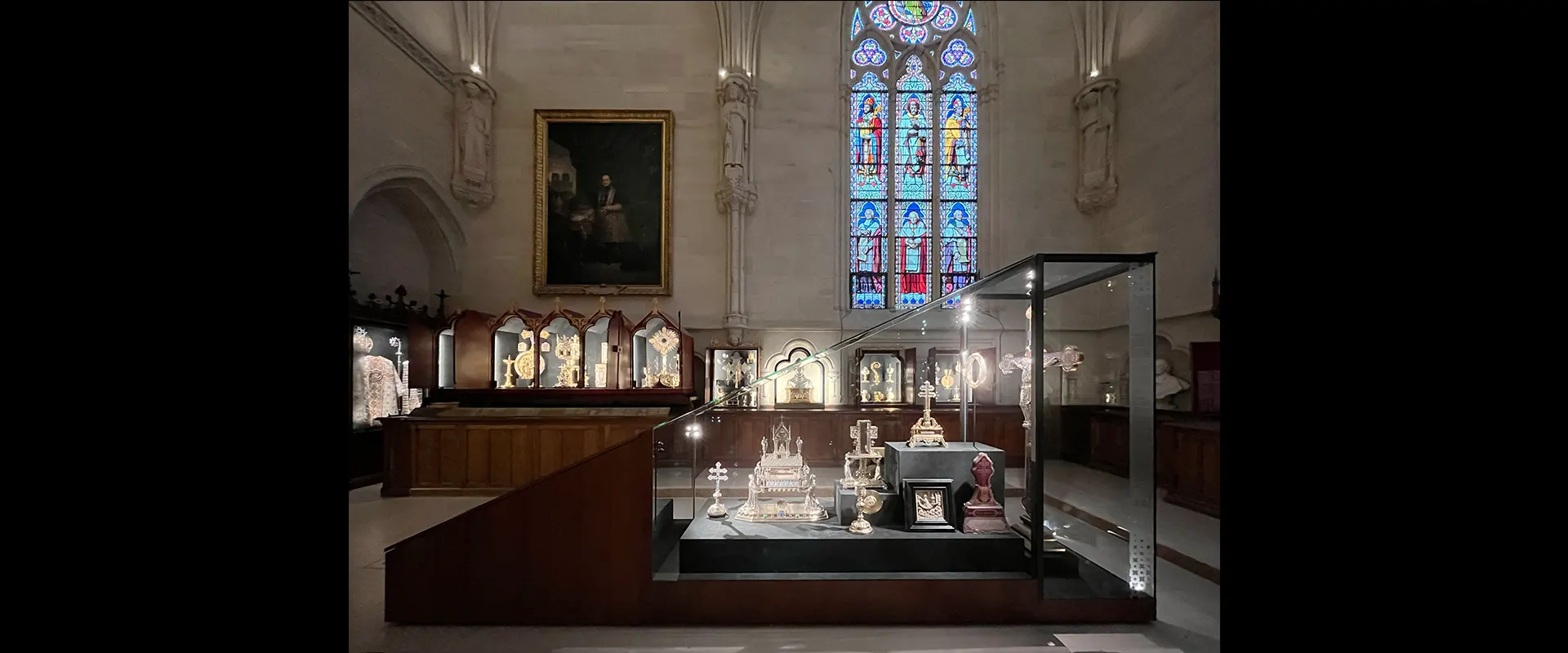Sacristie de Notre-Dame
Description
The story of the treasure of Notre-Dame in Paris dates back to early 1200s, when King Louis IX acquired the Crown of Thorns and other relics of the Passion – the objects used in the Crucifixion of Christ.
In 1239, Saint Louis presented the Crown of Thorns to Notre-Dame de Paris, and then ordered the construction of Sainte-Chapelle to house the precious relics, which were saved there for the centuries to come.
The relics were moved during the French Revolution and were only returned to the Archbishop of Paris following the Concordat of 1801. Five years later, they were placed in Notre-Dame’s Treasury, located in a separate wing near the south ambulatory chapels, where they are still kept to date together with the rest of liturgical objects.
With the return of the relics at Notre-Dame, the collection of the treasury was further enriched with royal commissions and donations, only to be sacked again amidst the 1830 riots. In the following decade, architects Eugène Emmanuel Viollet-le-Duc and Jean-Baptiste Lassus were charged with restoring the Cathedral, that had seriously deteriorated over time.
In 1849, their works extended to the reconstruction of the Sacristy, which they attempted to rebuild in a coherent neo-Gothic style, incorporating elements such as sculptural wall décor, stained glass windows, metalwork articles and elaborate goldsmithing to embellish the interiors and their furnishings with the aid of the most exquisite artists of the time.
In 1862, the city of Paris listed Notre-Dame as a Historic Monument, and, in 1991, UNESCO classified the Cathedral as a World Heritage Site.
Following the fire of 2019, which fortunately left the sacred relics undamaged, it was decided that the Treasury would receive a new museography, in an effort to highlight the Cathedral’s heritage ahead of its grand reopening.
With an extraordinary sense of responsibility, MUEVO implemented the scenographic concept for the new presentation of Notre Dame’s Treasury, as that was reimagined by AgeNCe Nathalie Crinière.
Specifically, our company engineered, produced, and installed ten bespoke showcases in six distinct typologies, five special constructions to support the integration of audiovisual content, and around thirty unique pieces for the exhibition’s interpretation material.
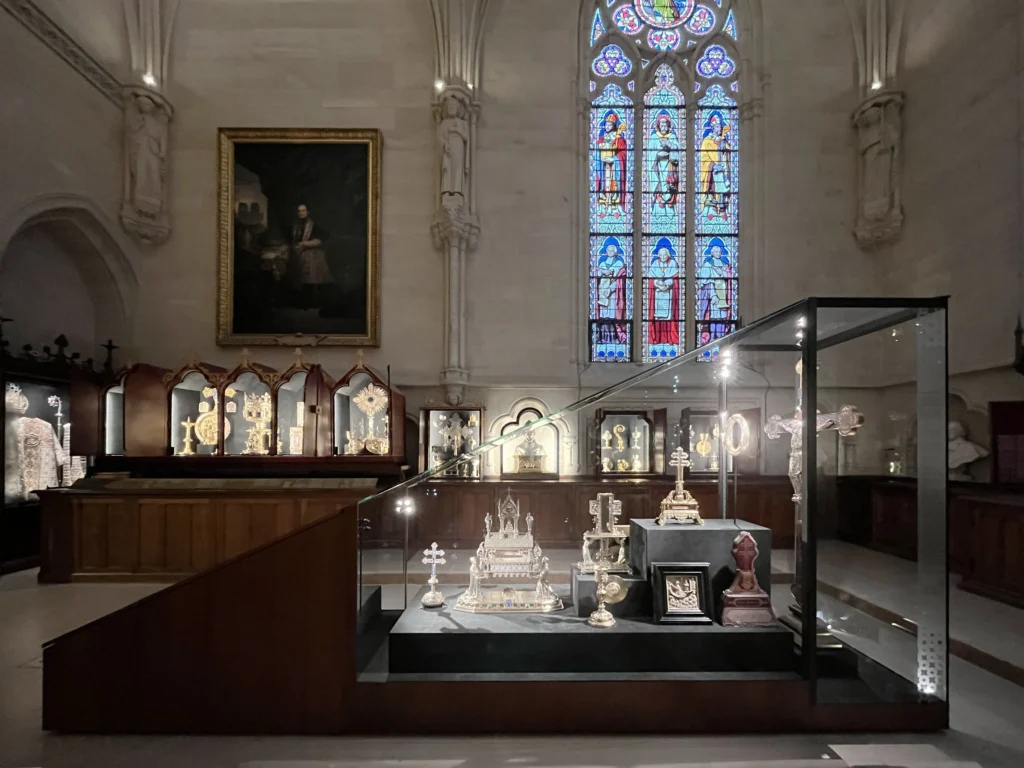

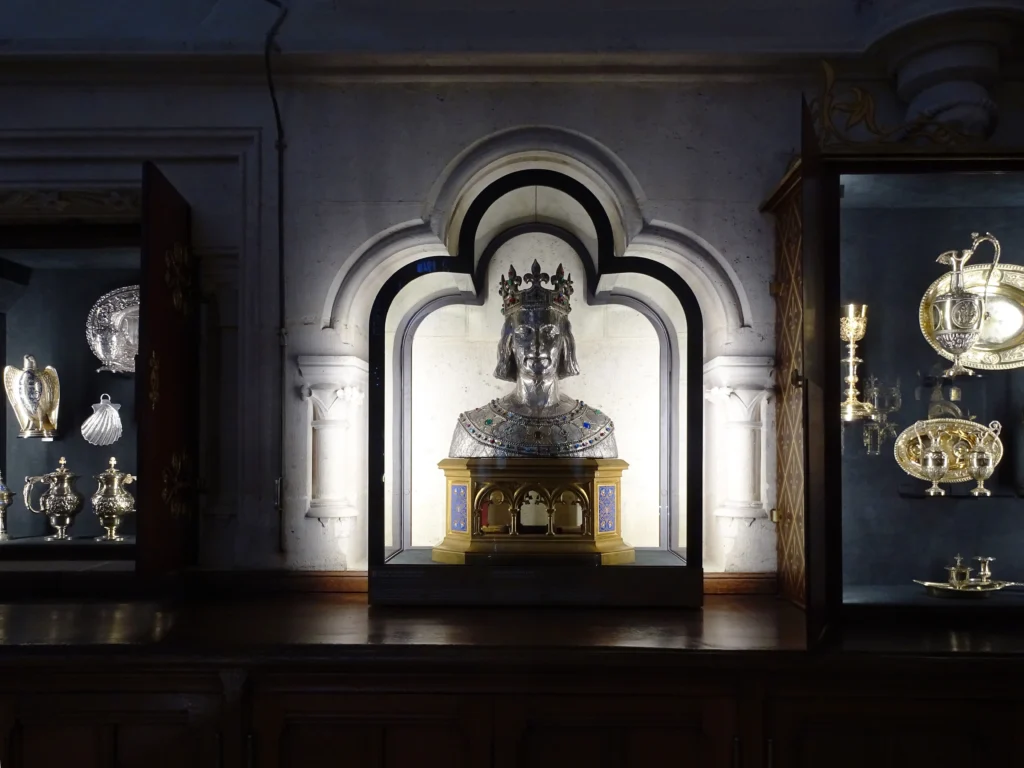
The Treasury of Notre-Dame de Paris is now presented to the public under a new light, whose overall design and feel is mainly characterized by two driving forces.
First, the idea of transparency, aimed at accentuating the Cathedral’s architectural features. To ensure this, the scenography team conceived cases with minimal coverage, exploiting the building’s existing architecture instead of using solid bases and backgrounds.
Another important consideration was the need for aesthetic cohesion: paying utmost respect to the stylistic designs of Viollet-le-Duc, the new scenography unites the Treasury’s interiors, old and new furnishings included, into a harmonious dialogue.
This is perhaps best exemplified through the forms and materials of our creations at the room of the Sacristy, where some of the most elaborate showcase typologies are located. Our central construction for the Sacristy essentially incorporates two showcases made of metal, wood and glass. In order to achieve seamless combination of materials, special methods of high technical complexity were employed.
Another notable pair of identical showcases is also to be found in this room: the shape of the two cases follows the curved recession of the wall, resembling the form of catholic shrines. These two display cases house the reliquaries of Saint Louis and Saint Dennis, respectively.
Apart from the display cases, all supporting exhibition equipment is made of steel with a brass emulsion lacquer effect to look like aged brass while being more resistant to wear and tear.
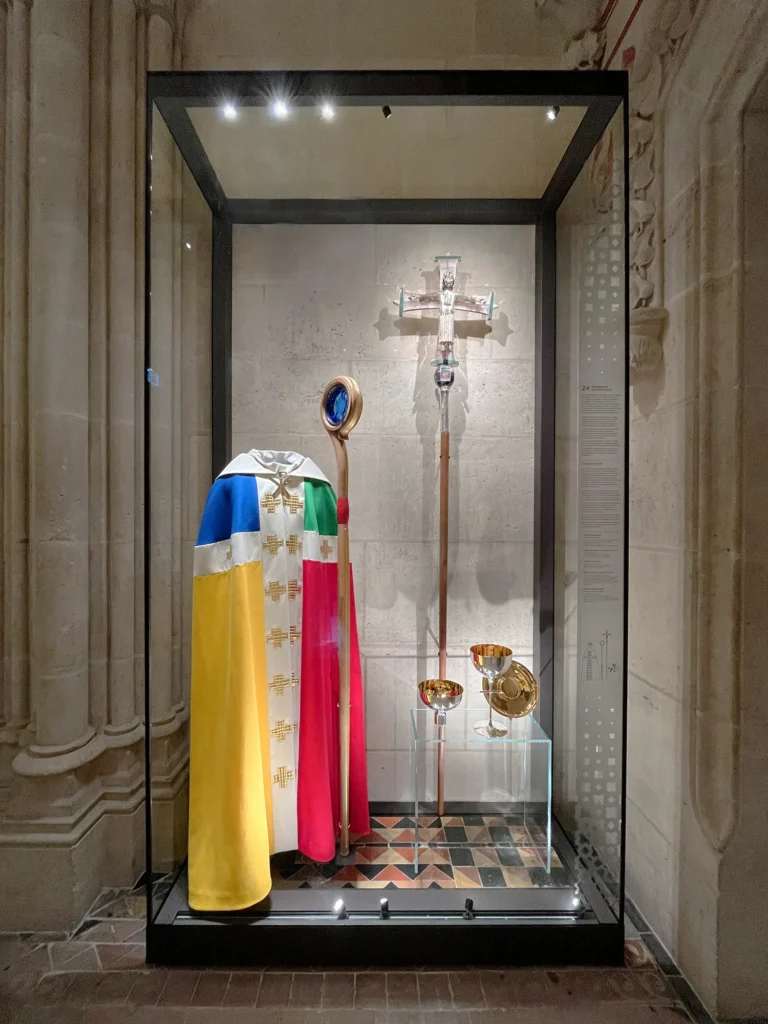
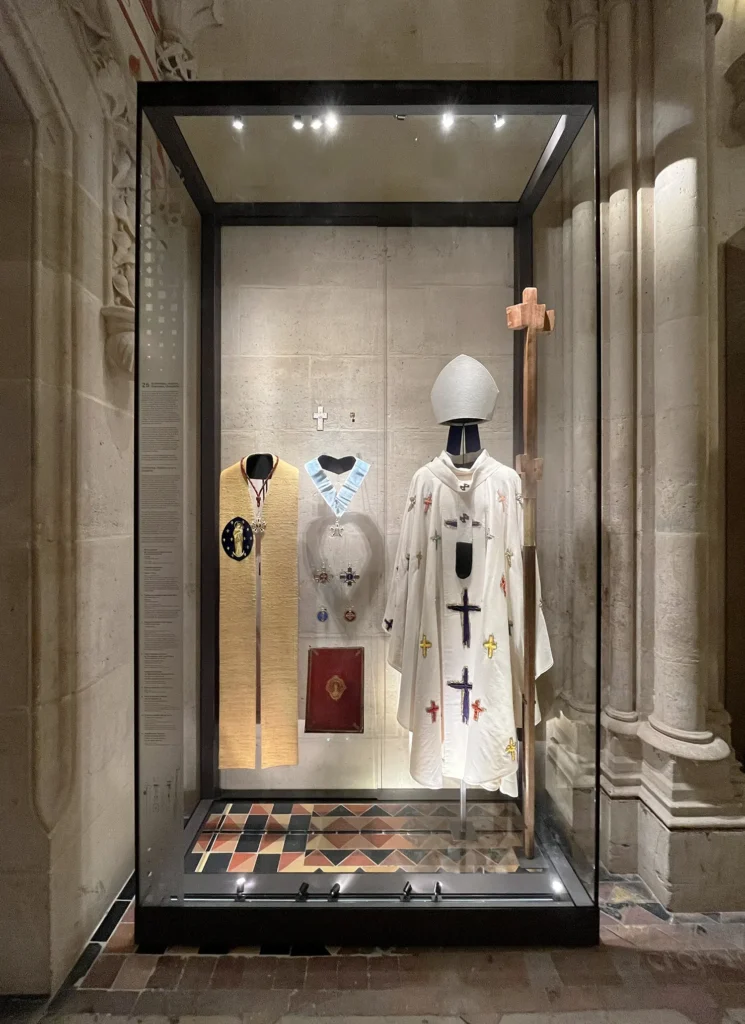
On a technical level, there were several challenges to address in this project. Perhaps the greatest one was posed by the status of the building, which made it impossible to intervene in its historical architectural elements.
To face this challenge, we had to support our constructions on the joints of the temple’s stonework, so all of our showcases were precisely designed based on the 3D scans of their installation locations. This proved particularly helpful for the showcases that had to follow the arches and curves of the building.
For the large, double-arched wall showcase in the section dedicated to the Coronation of Napoleon, structural glass panels had to be used as to avoid employing any visible support means given the construction’s dimensions. For this purpose, our engineering team also developed a special heavy-duty door opening system.
Another demanding aspect was the fact that our dedicated team had to continuously collaborate with other contractors and distinct stakeholders in order to achieve the desired end result within the given timeframe.
We were thus called to coordinate with different teams for each functional element of our display cases, including exhibit mounting and exhibition lighting, security, safety, and ergonomics, multimedia applications and graphics integration, amongst other features. With our tailored engineering methodology, we developed customized solutions to achieve the greatest possible balance while incorporating all the aforementioned elements.
The installation phase of this project was particularly challenging, too. Because of the Cathedral’s roof restoration works, our installation team had to receive special training for lead and asbestos awareness, and to follow the necessary Health & Safety measures that were required to work on site, alongside with thousands of other craftsmen and technicians.
Despite all the challenges, our participation in the project of the new exhibition of Notre-Dame’s Treasury was a remarkably honorable and equally rewarding moment in our journey. The opportunity to contribute to the “chantier du siècle” was an unparalleled experience that we shall always hold gratefully in our hearts.
Project Data
Location: Notre-Dame de Paris
Completion Date: 2024


